Coleus - The Ultimate Growing Guide from Proven Winners®
Coleus is a tropical plant with striking foliage often grown as an annual. A highly popular bedding plant during Victorian times, this member of the mint family is easy to grow, rewarding with months of continuous color.
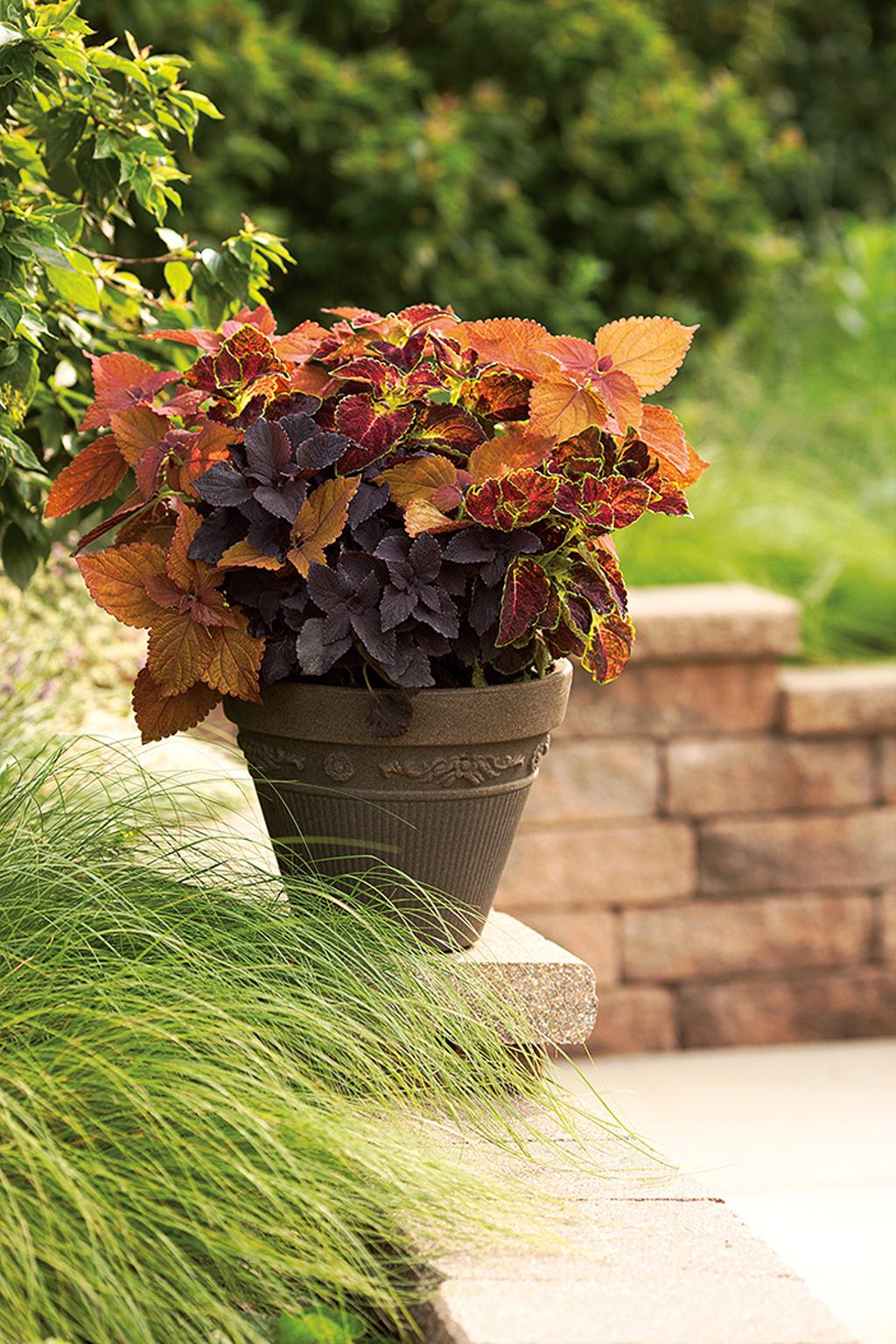 Buy coleus plants - Order online and have plants shipped right to your door
Buy coleus plants - Order online and have plants shipped right to your door
Coleus comes in an array of foliage colors, including red, pink, orange, yellow, chartreuse, green, burgundy and purple. Leaves 1-6” long can be pointed, oval or scalloped, many with intricate veining or patterns. Coleus flower in late summer, with blue flower spikes that are often trimmed off for a neater appearance. Though most are bush types, there are trailing varieties as well.
Tolerant of sun, shade and heat, coleus is a quick grower that can be massed in the landscape, used as a filler element in a container, or allowed to cascade in a hanging basket or window box. With hundreds of different varieties to choose from, there’s a coleus to suit any garden style or color scheme.
PLANTING & CARING FOR COLEUS
How to plant: Wait until temperatures are consistently above 60 degrees F before planting outdoors.
Coleus does best in partial to full shade, though many newer varieties can tolerate full sun. For optimum foliage color, choose a site that receives morning sun and afternoon shade. See more foliage plants for shade.
Follow these growing tips and space 1-2’ apart, depending on the variety:
- Loosen soil in the planting area to a depth of 6-12”.
- Remove plant from the nursery pot and loosen roots if potbound.
- Set plant in the hole with the top of the root ball level with the surrounding soil.
- Backfill the hole with soil and tamp down lightly to remove air pockets.
- Water regularly until plants are established.
Soil: Coleus prefers rich soil with good drainage. Compacted, clay or poorly draining soil can lead to root rot.
Watering: Coleus plants do best with evenly moist soil. Water when the top 1-2” of soil feels dry to the touch. Provide more water during prolonged heat or dry spells. Overwatering can cause root rot.
Fertilizing: At the time of planting, apply a slow-release all-purpose fertilizer according to instructions. Supplement with a balanced water-soluble fertilizer once a month.
Pruning: Pinch stem tips on young plants to promote branching and a full bushy habit. Cut off flower spikes as they appear to put energy back into foliage growth.
Containers: Coleus make excellent container plants, as a stand-alone accent, or as a thriller or spiller element in combination with other plants. Use high-quality all-purpose potting soil and make sure containers have adequate drainage holes.
Houseplants: Coleus can be grown as a houseplant. Place in a window that receives bright indirect light or under grow lights. Provide adequate humidity and keep plants in temperatures of 60 degrees F or higher.
TRY THESE PROVEN WINNERS® VARIETIES
Coleus comes in a wide array of leaf colors, patterns and shapes. Add these to your landscape:
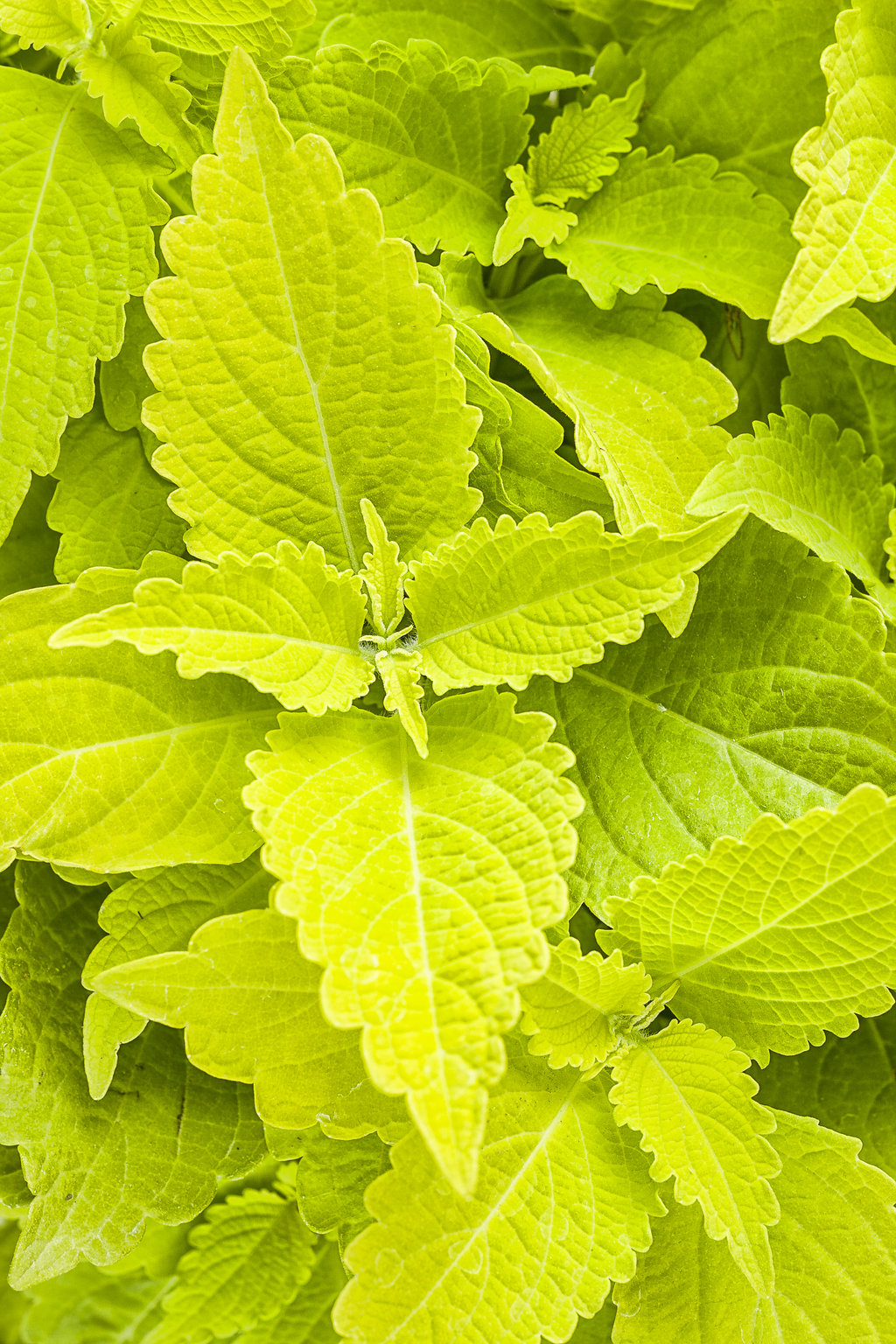 Color Blaze® Lime Time® has vivid chartreuse coloring that holds up well throughout the growing season. Adapts to a wide range of light conditions and is heat tolerant. Use this larger variety in mass plantings, as border edging or as a thriller element in containers. The lime-green coloring pairs well with many other plants. |
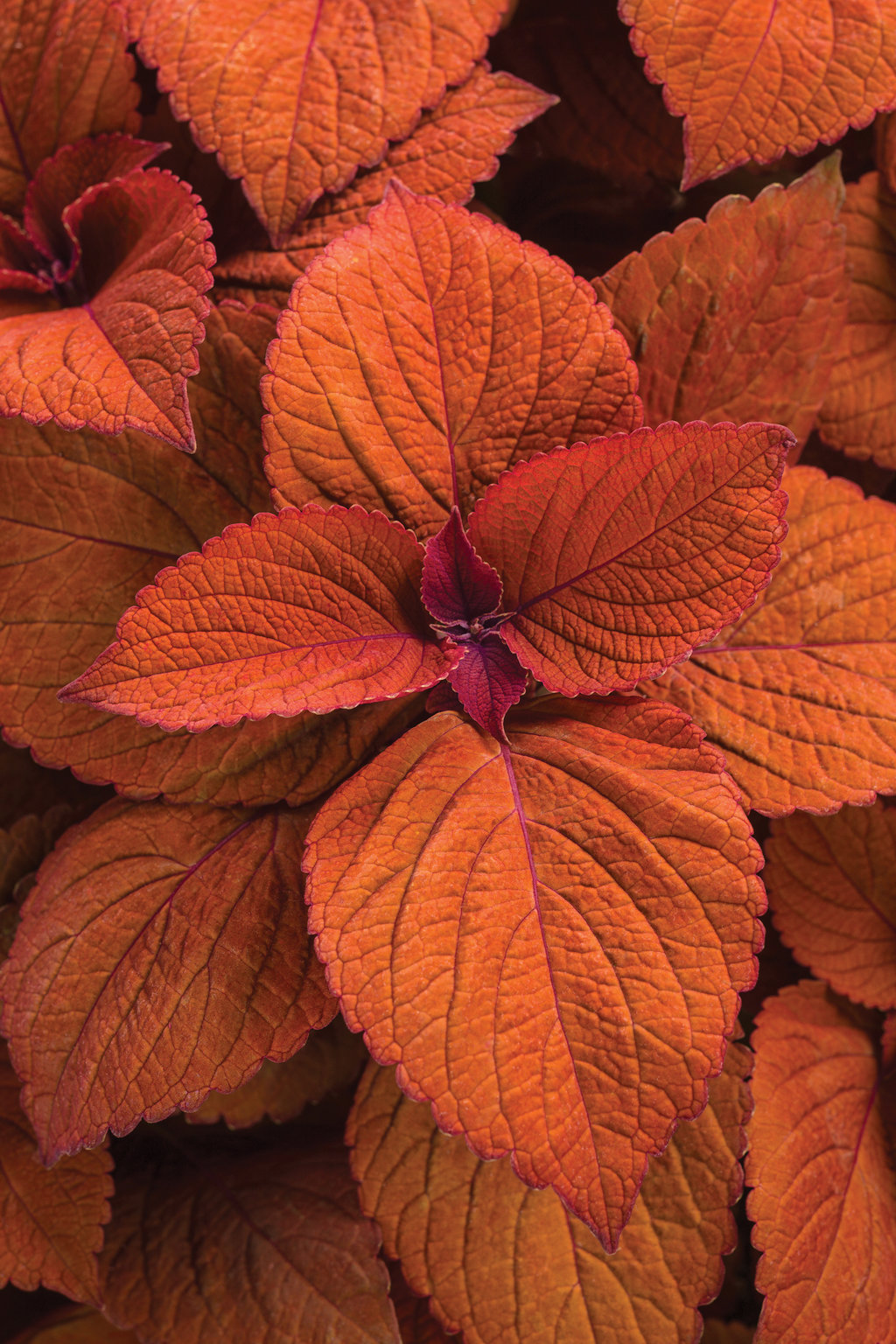 Color Blaze® Sedona Sunset® produces rich colors of coppery-orange with plum highlights, reminiscent of a southwestern sunset. Use this tall vigorous grower in mixed borders, massed as a bedding plant, as a thriller element or stand-alone accent in containers. Combine with complementary blue or purple hues for a pop of contrast. |
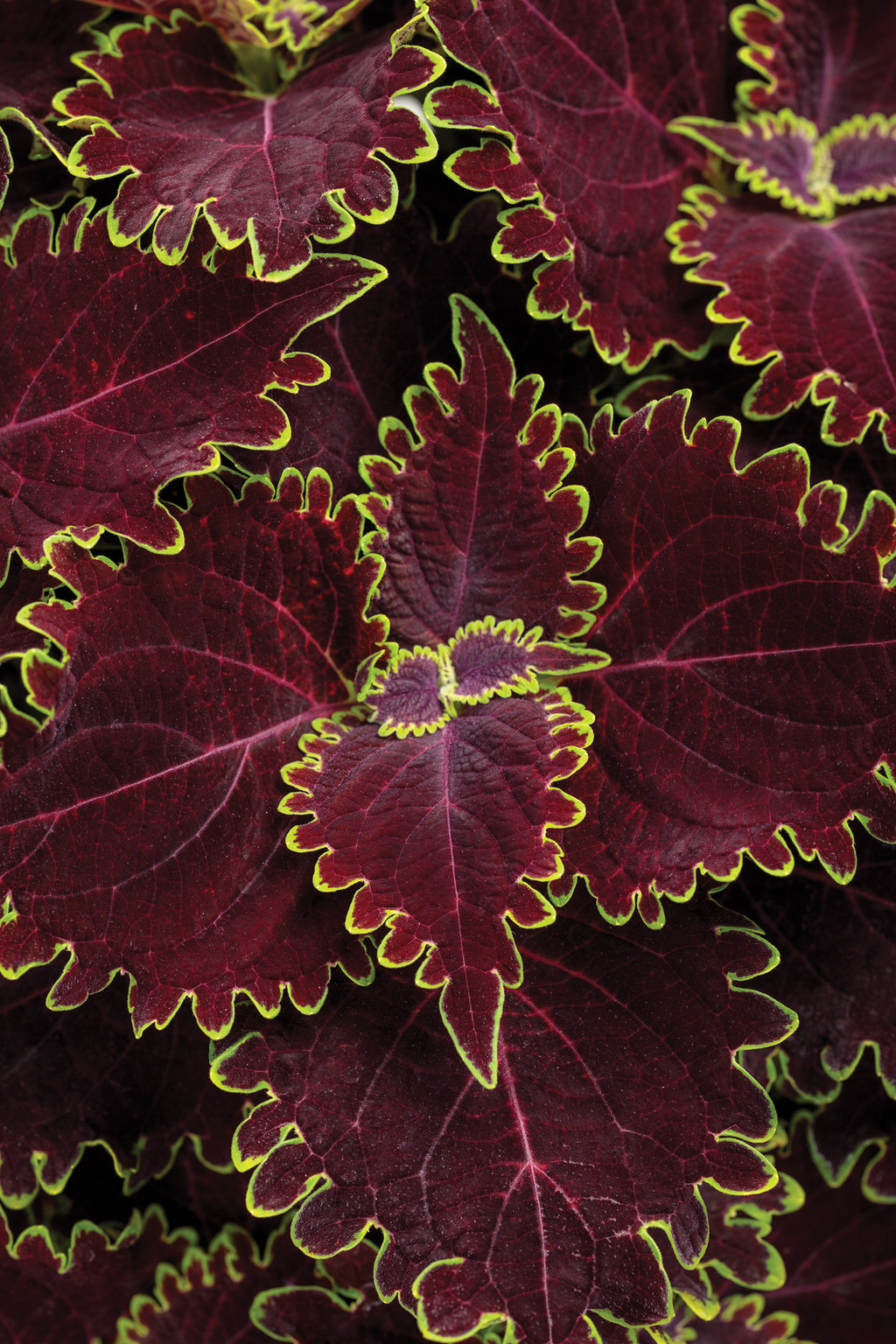 Color Blaze® Wicked Witch™ has deep burgundy foliage rimmed with a thin margin of chartreuse along the scalloped leaf edges, providing a bright pop of contrast. Tolerant of heat and varying light conditions, flowers appear late in the season, keeping energy into foliage production. The taller upright habit is useful in mixed borders, massed in the landscape, or as a container accent. |
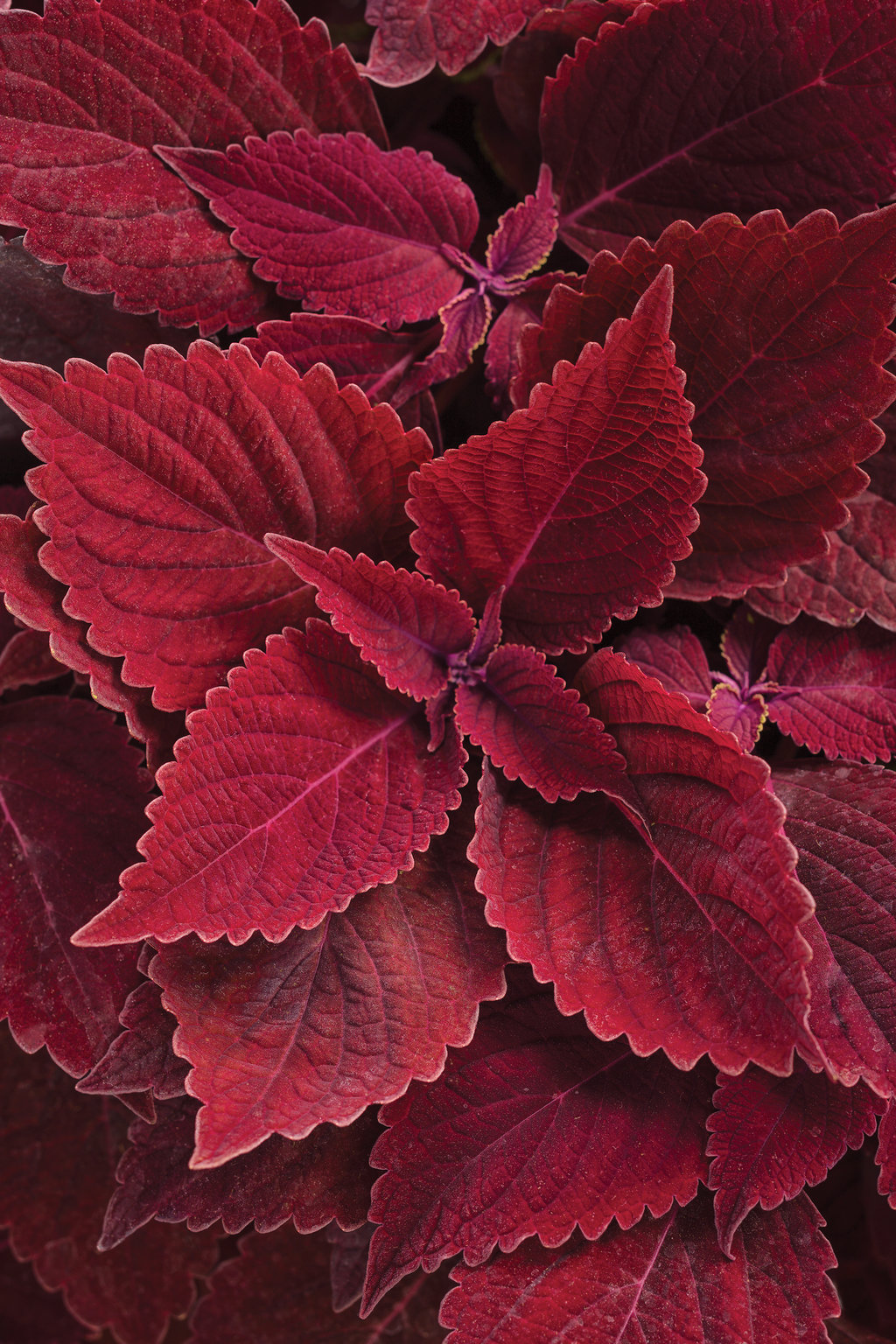 Color Blaze® Rediculous® is a vigorous well-branching variety with rich burgundy-red foliage. Coloring becomes more intense with increased sun. In arid regions, plant in partial to full shade. Combine with colors of chartreuse, yellow or blue for a dazzling pop of contrast. Use this taller form as a background element in the landscape or as a filler in containers. |
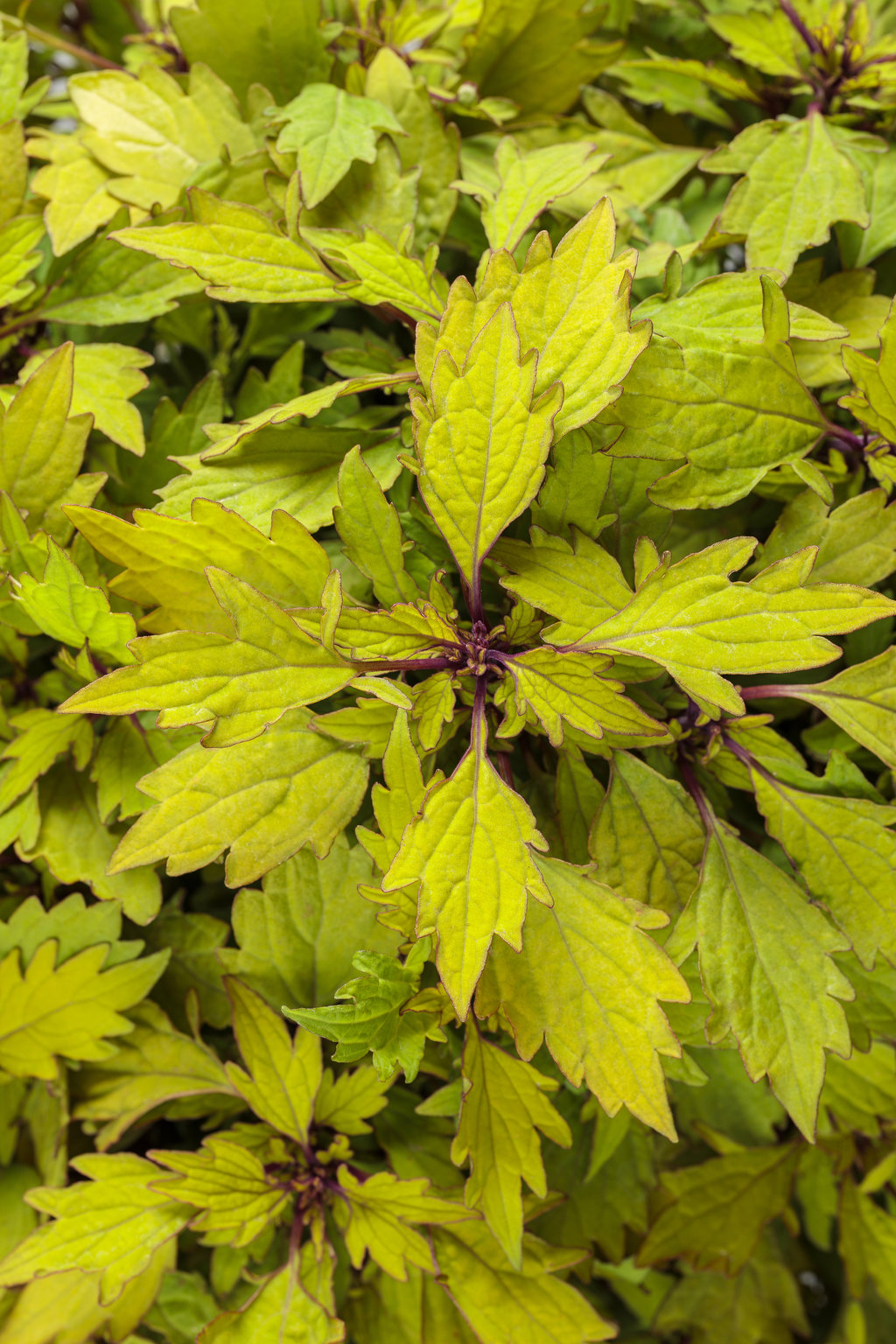 Color Blaze® Royale Pineapple Brandy™ has pointy serrated leaves with golden-green pineapple coloring and hints of deep burgundy-purple. Light up a deeply shaded area with this sun and shade-tolerant variety. The slightly more compact form is useful in mass plantings or as a thriller element in a container in combination with other warm-season annuals. |
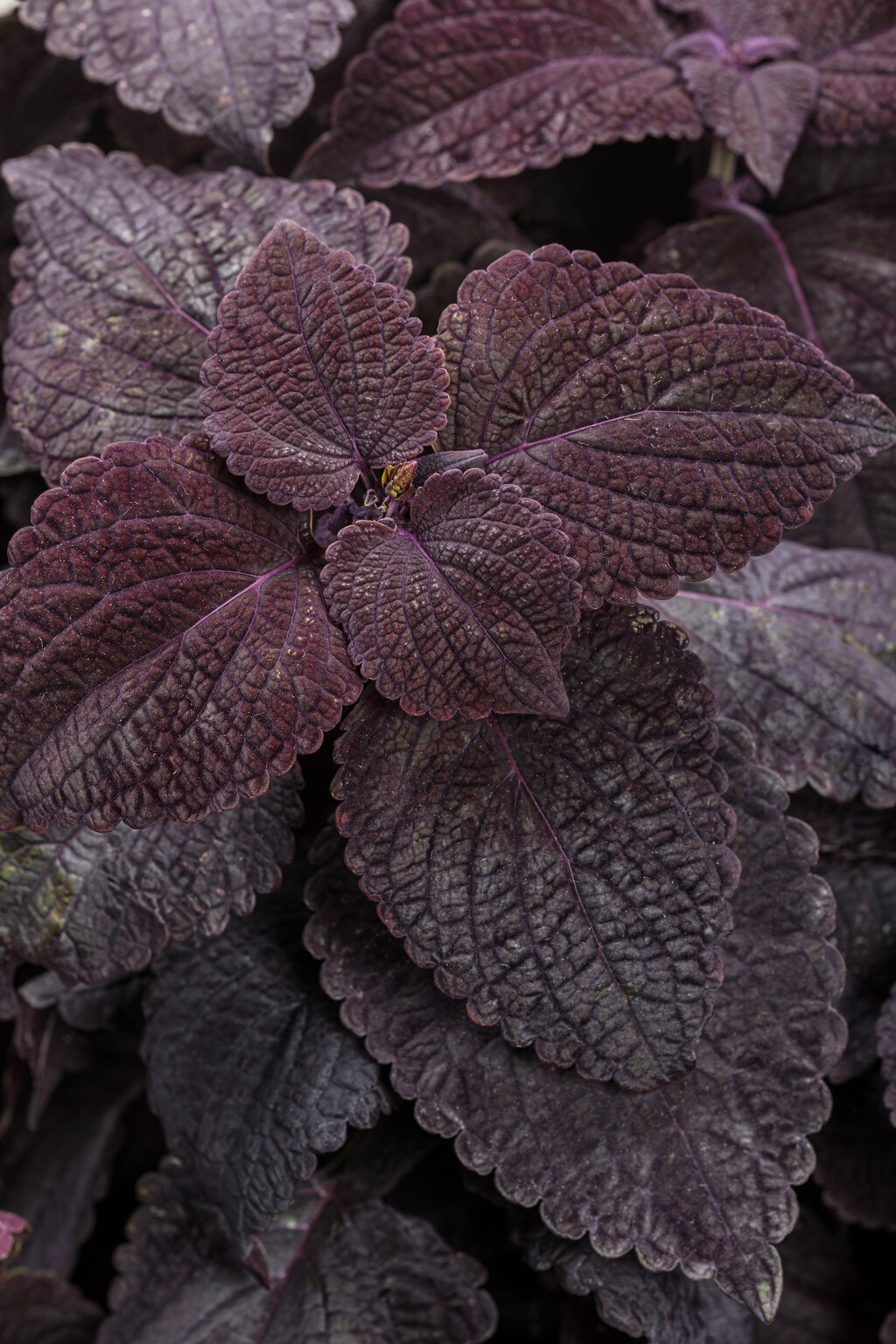 Color Blaze® Newly Noir™ is a newer variety with velvety dark purple, nearly black foliage. Contrast with hot hues of red or yellow for sizzling summer color, or combine with silver or blue for a more sophisticated look. Use this taller form in a mixed border, as a background plant or in a container in combination with other warm-season annuals. |
See more: 10 Colorful Coleus
COLEUS FAQ’s
Is coleus a perennial? Do coleus come back?
Hardy in USDA zones 10-11, coleus is a tender perennial but is most often grown as an annual. Since coleus are sensitive to cooler temperatures, they will only come back the following year in the warmest regions.
Do deer eat coleus?
Some gardeners consider coleus deer resistant, while others may experience moderate to severe browsing.
How long do coleus plants live?
Coleus will last from planting until the first frost.
What to plant with coleus in a container?
Many small perennials or warm-season annuals pair well with coleus. Choose plants with similar cultural needs. See these coleus container recipes.
HOW TO USE COLEUS IN YOUR LANDSCAPE
Coleus can be used in many different ways. Here are some ideas on how to use them in your yard:
- Plant trailing types in containers, window boxes and hanging baskets.
- Use a dwarf variety massed at the front of a mixed border or as pathway edging.
- Taller upright forms can be planted in a mixed border, used as a background plant, or massed in a bed or along a slope.
- Use a medium to large-sized variety as a thriller element in a container in combination with other plants.
- Feature a large variety as a stand-alone accent in a classic urn or decorative ceramic container.
- Light up dark corners of the yard with shade-tolerant varieties with brightly colored foliage.
- Choose varieties that match your outdoor decor for repetitive color echoes.
COMPANION PLANTS
Many other plants complement coleus in the landscape. Here are some suggestions:
For shady beds, combine coleus with other shade lovers such as:
- Infinity® Blushing Lilac New Guinea impatiens
- Endless™ Illumination bush violet
- Heart to Heart® Fast Flash™ caladium
- Catalina® Pink wishbone flower
For sunny sites, coleus can be planted alongside:
- Toucan® Yellow canna lily
- Unplugged® So Blue™ mealycup sage
- Graceful Grasses® ‘Fireworks’ variegated red fountain grass
- Supertunia® Royal Velvet® petunia
Pair coleus in containers with other plants such as:
- Luscious® Berry Blend™ lantana
- Proven Accents® Sweet Carolina Raven™ ornamental sweet potato vine
- Shadow Dancers® Violette fuchsia
- Superbells® Dreamsicle® calibrachoa




